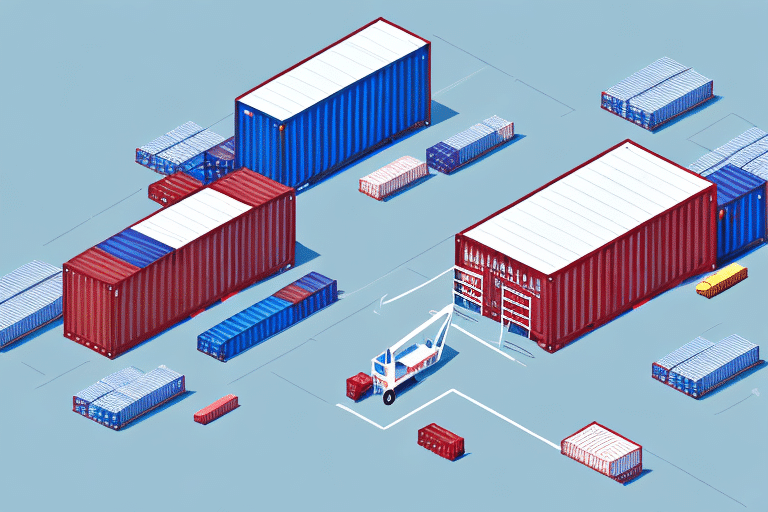Top 10 Shipping Software for E-Commerce in 2023
Running an e-commerce business can be a daunting task. One of the most important aspects of e-commerce is the shipping process. From shipping labels to tracking packages, there are numerous tasks that must be performed efficiently and quickly. Shipping software comes in handy to streamline these operations, ensuring that your business runs smoothly and your customers remain satisfied.
The Importance and Benefits of Shipping Software
Shipping software is an essential tool for all e-commerce businesses. It automates the shipping process, ensuring that packages are delivered to customers quickly and efficiently. The right shipping software can help businesses save time, reduce costs, and improve customer satisfaction.
Automated Shipping Processes
One of the key benefits of using shipping software is the automation of shipping tasks. This includes generating shipping labels, processing orders in bulk, and managing inventory. Automation reduces manual errors and speeds up the fulfillment process, allowing you to handle a larger volume of orders with ease.
Enhanced Customer Satisfaction
With features like package tracking and timely notifications, shipping software keeps customers informed about their order status. This transparency leads to higher customer satisfaction and loyalty, as customers appreciate being kept in the loop regarding their purchases.
Cost Savings
Shipping software often provides real-time shipping rates and allows businesses to compare rates from different carriers. This enables businesses to choose the most cost-effective shipping options, leading to significant savings on shipping expenses.
Choosing the Right Shipping Software for Your E-Commerce Business
Selecting the right shipping software involves considering several factors, including compatibility with your e-commerce platform, essential features, pricing, and customer support.
Compatibility with E-Commerce Platforms
Ensure that the shipping software integrates seamlessly with your e-commerce platform. Popular platforms like Shopify, WooCommerce, and Magento have specific shipping software integrations that facilitate smooth data transfer and operations.
Key Features to Look For
- Batch Shipping: Ability to process multiple orders at once.
- International Shipping: Support for global shipping options.
- Real-Time Tracking: Real-time package tracking for customers.
- Automated Label Generation: Automatic creation of shipping labels.
- Analytics and Reporting: Insights into shipping performance and costs.
Customer Support and Scalability
Consider the level of customer support provided by the shipping software company. Reliable and responsive support is crucial in resolving issues promptly. Additionally, ensure that the software can scale with your business as it grows, accommodating increased order volumes and expanding shipping needs.
A Detailed Review of the Top 10 Shipping Software for E-Commerce in 2023
After thorough research, we have compiled a list of the top 10 shipping software solutions for e-commerce businesses in 2023. These software options have been evaluated based on core features, pricing, ease of use, and customer support.
- ShipStation: Known for its robust feature set and integrations with major e-commerce platforms.
- Easyship: Offers comprehensive international shipping solutions and competitive rates.
- Shippo: Provides flexible APIs and a user-friendly interface suitable for small to medium businesses.
- ShipBob: Focuses on fulfillment services with integrated shipping solutions.
- ShippingEasy: Offers easy-to-use tools with automation features suitable for small businesses.
- Ordoro: Ideal for businesses looking for advanced inventory management alongside shipping.
- Stamps.com: Best for businesses heavily reliant on USPS shipping services.
- Freightos: Specializes in freight shipping with a focus on large shipments.
- Pirate Ship: Offers free shipping software with no monthly fees, ideal for startups.
- Sendle: Provides eco-friendly shipping options with competitive pricing.
Comparison of Features and Pricing
Here's a comparison of the features and pricing of the top 10 shipping software for e-commerce businesses in 2023:
| Software | Features | Pricing |
|---|---|---|
| ShipStation | Bulk label creation, multi-carrier support, automation rules | Starting at $9/month |
| Easyship | International shipping, rate comparison, tax and duty calculator | Free plan available; paid plans from $29/month |
| Shippo | API integrations, address validation, tracking | Pay-as-you-go; free for up to 50 shipments/month |
| ShipBob | Fulfillment services, inventory management, real-time tracking | Custom pricing based on business needs |
| ShippingEasy | Automation tools, inventory management, reporting | Plans start at $29/month |
| Ordoro | Advanced inventory management, dropshipping, wholesale support | Starting at $59/month |
| Stamps.com | USPS integration, mailing solutions, label printing | Starts at $17.99/month |
| Freightos | Freight booking, rate comparison, shipment tracking | Custom pricing based on shipment volume |
| Pirate Ship | Free USPS shipping, discounted rates, easy label printing | Free to use; pay for postage |
| Sendle | Eco-friendly shipping, door-to-door service, real-time tracking | Pricing based on shipment size and distance |
Integrating Shipping Software with Your E-Commerce Platform
Integration of shipping software with your e-commerce platform is critical for seamless operations. Most shipping software offers plugins or APIs that make integration straightforward.
Steps to Integrate
- Choose Compatible Software: Select shipping software that supports your e-commerce platform.
- Install Plugins or Set Up APIs: Follow the software’s integration guides to connect it with your platform.
- Configure Settings: Set up shipping rates, carrier preferences, and label formats.
- Test the Integration: Process a few test orders to ensure data flows correctly between systems.
Optimizing Integration
Ensure that data communication between the shipping software and your e-commerce platform is accurate. Regularly update the software to maintain compatibility and incorporate new features that enhance shipping efficiency.
Optimizing Your Shipping Process with Shipping Software
Optimizing your shipping process involves enhancing operational efficiency and maximizing the use of available resources. Shipping software plays a pivotal role in this by automating tasks, reducing costs, and improving delivery times.
Automating Shipping Tasks
Automation reduces manual intervention, minimizing errors and speeding up the fulfillment process. Features like automatic label generation and bulk order processing are essential for maintaining efficiency.
Reducing Shipping Costs
By comparing rates from different carriers and selecting the most cost-effective options, shipping software helps in significantly reducing shipping expenses. Additionally, optimizing package sizes and weights can further lower costs.
Integrating with Other Systems
Shipping software can integrate with inventory management, order processing, and customer relationship management (CRM) systems to create a seamless workflow. This integration ensures that all aspects of your business are synchronized, reducing errors and increasing efficiency.
The Future of Shipping Software and Its Impact on E-Commerce Businesses
The future of shipping software is marked by advancements in technology that will make shipping processes more intuitive, efficient, and cost-effective. These advancements will aid e-commerce businesses in staying competitive and meeting evolving customer expectations.
Technological Advancements
Artificial Intelligence (AI) and Machine Learning (ML) will enhance route optimization, demand forecasting, and personalized shipping experiences. These technologies will enable more precise and efficient shipping operations.
Impact on E-Commerce Businesses
With more advanced shipping software, businesses can offer faster delivery options, improve customer satisfaction, and manage logistics more effectively. This will lead to higher customer retention and increased sales, as businesses can better meet the demands of their customers.
Best Practices and Common Mistakes When Using Shipping Software
Best Practices
- Regularly Update Software: Keep your shipping software up-to-date to benefit from the latest features and security improvements.
- Train Your Team: Ensure that your staff is well-trained in using the shipping software to maximize its potential.
- Monitor Performance: Use analytics and reports to monitor your shipping performance and identify areas for improvement.
Common Mistakes to Avoid
- Poor Integration: Failing to properly integrate shipping software with your e-commerce platform can lead to data errors and inefficiencies.
- Neglecting Training: Not training your team on how to use the software can result in underutilization and errors.
- Ignoring Software Updates: Not keeping the software updated can make your shipping process vulnerable to security risks and outdated procedures.
Case Studies: Success Stories of Businesses Using Top-Rated Shipping Software
Many businesses have successfully implemented top-rated shipping software, resulting in significant improvements in their shipping processes, cost reductions, and enhanced customer satisfaction.
Company A: Small E-Commerce Business
Company A implemented ShipStation and saw a 30% reduction in shipping costs within the first month. Additionally, customers reported a 20% increase in satisfaction with the speed and accuracy of their deliveries.
Company B: Large Retail Chain
Company B integrated Easyship into their operations and achieved a 50% reduction in shipping errors, leading to fewer returns and exchanges. This bolstered their reputation and customer trust.
Frequently Asked Questions about Shipping Software for E-Commerce
- What is shipping software?
- Shipping software automates the shipping processes, making it easier to manage multiple orders and shipments efficiently.
- Can shipping software help reduce shipping costs?
- Yes, shipping software can help reduce costs by finding the most cost-effective shipping options and avoiding mistakes like incorrect package weights and dimensions.
- Is it necessary to integrate shipping software with an e-commerce platform?
- Yes, integration ensures seamless data transfer and reduces the risk of manual data entry errors.
In conclusion, implementing the right shipping software is essential for any e-commerce business. Choosing the right software, integrating it with your e-commerce platform, and optimizing your shipping processes can lead to significant cost savings, faster and more reliable delivery times, and increased customer satisfaction. Apply our tips and avoid common mistakes to make the most out of your chosen shipping software.






















